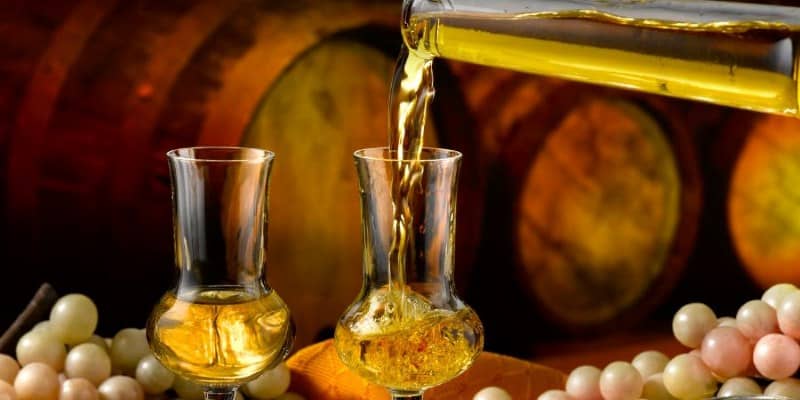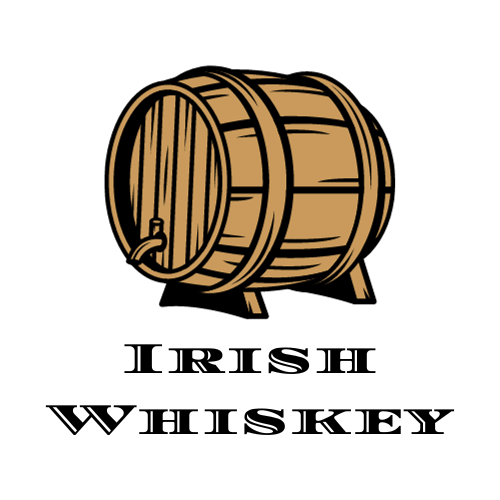What Is Grappa Made From (Ingredients)
Grappa, a traditional Italian alcoholic beverage, is made from a combination of several key ingredients that contribute to its unique flavor and characteristics. Let’s delve into the details of each ingredient to understand its role in the production of this beloved spirit.
Grapes
Grapes are the primary ingredient in making grappa. The selection of grapes is crucial as it directly affects the final flavor profile of the spirit. By carefully choosing the right grapes, distillers can create a grappa with distinct aromas and tastes.
Selection of Grapes
The grapes used for making grappa can vary depending on the region and the distiller’s preference. Both white and red grapes are used, each bringing their own distinctive qualities to the final product.
White Grapes
White grape varieties, such as Moscato, Prosecco, and Trebbiano, are frequently used in the production of grappa. These grapes are renowned for their lightness, delicate flavors, and floral aromas. People often describe the contribution of the skins, seeds, and stems to the character of grappa as elegant and refined.
Red Grapes
Red grape varieties, such as Barbera, Nebbiolo, and Sangiovese, are also commonly used in grappa production. These grapes lend a deeper color and more robust flavors to the spirit. The resulting grappa is often full-bodied and exhibits fruity and spicy notes.
Grape Variety
Besides the color of the grapes, the specific variety chosen also impacts the grappa’s taste. Different grape varieties have unique characteristics, such as the Muscat grape’s aromatic sweetness or the Sangiovese grape’s boldness. Distillers select grape varieties that align with their desired flavor profile to craft a distinctive grappa.
Pomace
Pomace, a byproduct of winemaking, serves as the starting material for grappa production. It consists of the grape skins, seeds, and stems left behind after the grapes have been pressed for their juice.
Definition
Pomace refers to the solid remnants of the grapes once the juice has been extracted. It contains the residual pulp, skins, seeds, and stalks.
Types of Pomace
There are two main types of pomace used in grappa production: fresh pomace and distilled pomace. Fresh pomace refers to the leftover material immediately after pressing, while distilled pomace is obtained after the pomace has undergone a fermentation process.
Obtaining Pomace
Wineries typically provide distillers with the pomace used for grappa production. The pomace is collected and stored until it is ready to undergo the fermentation process.
Treatment of Pomace
To ensure the quality of the grappa, the pomace undergoes treatment before fermentation. The pomace is often exposed to heat or steam to eliminate any unwanted bacteria or molds. This treatment promotes a cleaner fermentation process and ultimately results in a better-tasting grappa.
Fermentation
Fermentation is a crucial step in the production of grappa. During this process, the natural sugars present in the pomace undergo chemical reactions, converting them into alcohol.
Purpose of Fermentation
The primary purpose of fermentation is to convert the sugars in the pomace into alcohol. This process generates the necessary alcohol content for the distillation phase.
Natural Fermentation
Natural fermentation refers to the process where the yeast naturally present in the pomace converts the sugars into alcohol. Distillers encourage this process by allowing the pomace to ferment in open containers. The resulting grappa often retains more of the aromas and flavors from the original grapes.
Controlled Fermentation
In some cases, distillers may choose to use specific yeast strains to control and enhance the fermentation process. Controlled fermentation allows for greater consistency in flavor and results in a more standardized grappa.
Duration of Fermentation
The duration of fermentation varies depending on the desired flavor profile and the type of grappa being produced. It can range from a few days to several weeks. The longer the fermentation period, the more time the yeast has to interact with the sugars, producing a more complex and flavorful grappa.
This image is property of images.pexels.com.
Distillation
Distillation is the process of separating alcohol from the fermented pomace. It involves heating the liquid, collecting the evaporated alcohol, cooling it, and condensing it to form the grappa.
Distillation Process
The distillation process begins by heating the fermented pomace in a still. As the temperature rises, the alcohol evaporates and rises into the still’s neck or column.
Pot Still Distillation
Pot still distillation is a traditional method commonly used in grappa production. Using a pot still involves heating the fermented pomace and condensing the alcohol vapor into liquid form. This method allows for a more artisanal approach, preserving the fruity and aromatic qualities of the grappa.
Continuous Distillation
Heads, Hearts, and Tails
During the distillation process, the alcohol vapor is separated into three distinct components: heads, hearts, and tails. The heads contain undesirable compounds, while the hearts comprise the desired alcohol content. The tails consist of lower-quality alcohol. Distillers carefully separate these fractions to ensure the highest possible quality of the grappa.
Alcohol Concentration
The distillation process determines the alcohol concentration of the grappa. The alcoholic strength typically ranges between 37% and 60% alcohol by volume (ABV). The combination of distillation techniques, careful monitoring, and blending of the obtained fractions achieves the desired alcohol concentration.
Water
Water is an essential component in the production of grappa. It plays a vital role in refining the final product and adjusting the alcohol concentration.
Role of Water
Water Source
The source of the water used in grappa production can vary. Distillers often prefer to use high-quality spring water or purified water to ensure that it does not introduce any unwanted flavors or impurities.
Water Quality
The quality of water used in grappa production is of utmost importance. Distillers adhere to strict quality control measures to ensure that the water does not affect the taste or overall quality of the grappa.
Water Additions
In some cases, distillers may choose to add small amounts of water during the fermentation process. This addition helps control the fermentation temperature and ensures that the pomace remains moist, allowing for better yeast activity.
This image is property of images.pexels.com.
Ageing
Ageing is an optional step in clamp production, but it greatly contributes to the complexity and character of the final product. By subjecting the grappa to a maturation period in wooden barrels, distillers can enhance its flavors and aromas.
Maturation Period
The maturation period of grappa can range from a few months to several years. During this time, the clamp interacts with the wood of the barrels, extracting different compounds that contribute to its flavor and color.
Type of Aging Barrels
Characteristics of Aged Grappa
Aged grappa generally exhibits a smoother and more rounded taste compared to young clamp. The prolonged interaction with the wood imparts a subtle complexity, introducing flavors like vanilla, spices, and dried fruits.
Effects of Ageing
Ageing can mellow out harsh flavors and aromas, making the clamp more enjoyable to drink. It also allows for the integration and development of various flavor components, resulting in a harmonious and well-balanced spirit.
Also Check: What Does Liqueur Taste Like Exactly?
Sugar
Sweetness Levels
Grappa can range from dry to slightly sweet, depending on the addition of sugar. Producers carefully calibrate sugar levels to enhance the overall taste and balance of the spirit.
Sugar Addition
Distillers may add a small amount of sugar during the blending phase to achieve the desired level of sweetness. Typically, this addition is minimal and aims to enhance certain flavor notes without overpowering the natural characteristics of the distillate.
Certified Sugar-Free Grappa
Sugar-free clamp is also available in the market. These grappas undergo rigorous testing and adhere to strict regulations to ensure they contain no added sugars. They exhibit a purer, more authentic taste that showcases the essence of the grapes and the distillation process.
Sugar Influence on Flavor
The addition of sugar can impact the flavor profile of clamp by providing a hint of sweetness. When used in moderation, it can help round out the spirit and enhance certain fruit and floral notes, offering a more pleasant drinking experience.

Additives
While clamp is typically a simple and natural spirit, there are regulations governing the use of certain additives to ensure its quality and authenticity.
Permitted Additives
Grappa production permits the use of a few specific additives. This includes caramel for color adjustments and natural flavor enhancers derived from fruit or other botanical sources.
Use of Caramel
Other Flavor Enhancers
Besides caramel, distillers can use certain natural flavor enhancers, such as herbs, spices, or fruit extracts, to impart additional aromas or tastes to the grappa. The regulations ensure that the additives do not overpower the natural flavors of the grappa and responsibly enhance the overall drinking experience.
Legal Restrictions
The use of additives in grappa production is subject to stringent legal restrictions to maintain the integrity and authenticity of the spirit. The regulations ensure that the additives do not overpower the natural flavors of the grappa and responsibly enhance the overall drinking experience.
Regional Variations
Grappa production varies across different regions of Italy, contributing to the diverse range of flavors and styles available.
Production Regulations
Each region in Italy has its regulations governing the production of grappa. These regulations dictate the permitted grape varieties, distillation methods, aging requirements, and quality control measures. Adhering to these regulations helps ensure that the clamp produced within a specific region maintains its distinct identity and quality.
Certification Labels
Grappas originating from specific regions may receive certifications and labels to signify their authenticity and adherence to regional traditions. These labels provide consumers with assurance regarding the origin and quality of the grappa.
Quality Control Measures
To maintain consistent quality, regional grappa producers implement strict quality control measures throughout the production process. These measures encompass everything from grape selection to distillation techniques, ensuring that only the best-quality clamp reaches consumers.


